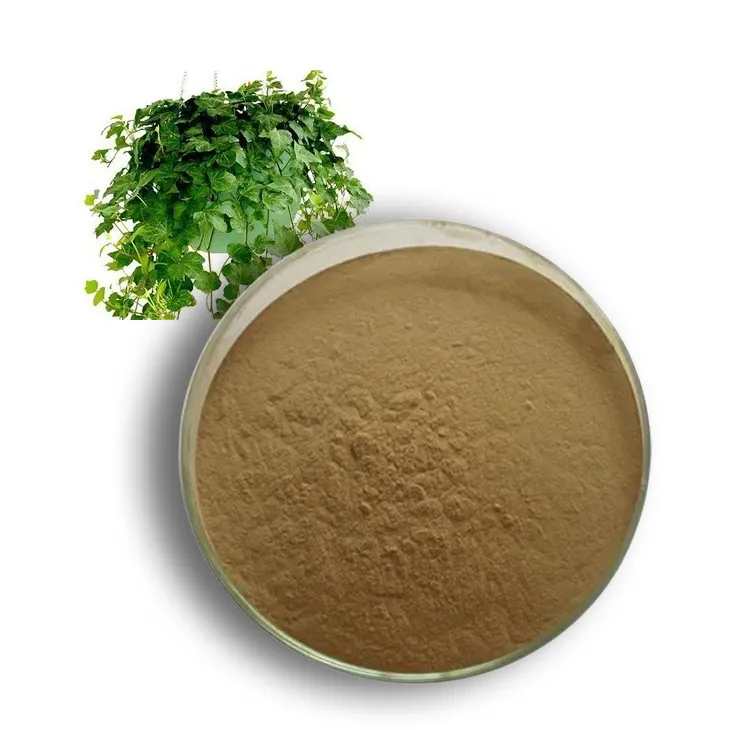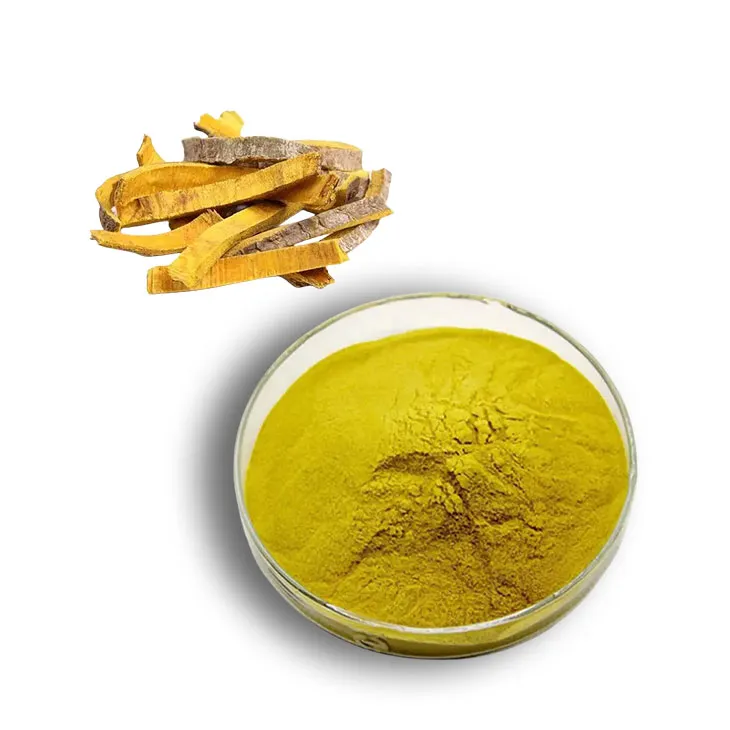- 0086-571-85302990
- sales@greenskybio.com
The Essence of Plants: A Deep Dive into the Extraction and Analysis of Secondary Metabolites
2024-07-16
1. Introduction
Plants are not only the primary producers in most ecosystems but also a vast repository of chemical compounds known as secondary metabolites. These metabolites, while not directly involved in the primary growth and development processes like photosynthesis or respiration, play a crucial role in the plant's survival, adaptation, and interaction with its environment. They are the essence of plants in many ways, and understanding their extraction and analysis is of great significance in various fields such as medicine, agriculture, and biodiversity conservation.
2. What are Secondary Metabolites?
Secondary metabolites are a diverse group of organic compounds produced by plants. They can be classified into several major classes, including phenolics, terpenoids, and alkaloids.
2.1 Phenolics
Phenolics are characterized by the presence of one or more phenolic rings in their structure. They include compounds such as flavonoids, phenolic acids, and lignans. Flavonoids, for example, are well - known for their antioxidant properties and are found in many fruits and vegetables. Phenolic acids, on the other hand, play important roles in plant defense mechanisms against pathogens.
2.2 Terpenoids
Terpenoids are a large and diverse class of secondary metabolites. They are composed of isoprene units and can range from simple molecules like monoterpenes (found in essential oils) to complex polymers like rubber. Terpenoids are involved in various plant functions, such as attracting pollinators with their pleasant scents or repelling herbivores with their bitter taste.
2.3 Alkaloids
Alkaloids are nitrogen - containing compounds with a wide range of pharmacological activities. Examples include caffeine in coffee, nicotine in tobacco, and morphine in poppies. Alkaloids often act as chemical defenses in plants, as they can be toxic to herbivores and pathogens.
3. Extraction of Secondary Metabolites
The extraction of secondary metabolites from plants is a crucial step in their study and utilization. There are both traditional and modern methods available, each with its own advantages and limitations.
3.1 Traditional Extraction Methods
- Maceration: This is one of the simplest and oldest methods. In maceration, the plant material is soaked in a solvent (usually ethanol or methanol) for a period of time, allowing the secondary metabolites to dissolve into the solvent. The plant material is then filtered out, and the solvent is evaporated to obtain the crude extract. However, this method can be time - consuming and may not be very efficient for extracting certain types of metabolites.
- Infusion: Similar to maceration, infusion involves steeping the plant material in a hot solvent. This method is often used for extracting water - soluble metabolites. For example, herbal teas are made by infusing plant material in hot water, which extracts certain secondary metabolites along with other components.
- Percolation: In percolation, the solvent is slowly passed through a column filled with the plant material. This method can provide a more continuous extraction process compared to maceration and infusion, and can be more efficient in some cases. However, it requires more specialized equipment and careful control of the extraction process.
3.2 Modern Extraction Methods
- Supercritical Fluid Extraction (SFE): This method uses supercritical fluids, such as supercritical carbon dioxide (scCO₂), as the extraction solvent. Supercritical fluids have properties between those of a liquid and a gas, which allows for efficient extraction of secondary metabolites. SFE has several advantages, including being a relatively clean and green extraction method, as carbon dioxide is non - toxic and can be easily removed from the extract. It can also be highly selective, depending on the operating conditions.
- Ultrasound - Assisted Extraction (UAE): UAE utilizes ultrasonic waves to enhance the extraction process. The ultrasonic waves create cavitation bubbles in the solvent, which implode and generate high - pressure and high - temperature micro - environments. These micro - environments help to break down the cell walls of the plant material and increase the mass transfer of the secondary metabolites into the solvent. UAE is a relatively fast and efficient method, and can be used with a variety of solvents.
- Microwave - Assisted Extraction (MAE): MAE uses microwave energy to heat the solvent and plant material. The rapid heating generated by microwaves can cause the plant cells to rupture more quickly, releasing the secondary metabolites into the solvent. MAE is also a relatively fast method, but it requires careful control of the microwave power and extraction time to avoid degradation of the metabolites.
4. Analysis of Secondary Metabolites
Once the secondary metabolites are extracted, they need to be analyzed to determine their chemical composition, structure, and quantity. There are several analytical techniques available for this purpose.
4.1 Chromatographic Techniques
- High - Performance Liquid Chromatography (HPLC): HPLC is a widely used technique for separating and analyzing secondary metabolites. It uses a liquid mobile phase and a stationary phase (usually a column filled with a specific packing material) to separate the components of a mixture. The separated components are then detected by a variety of detectors, such as UV - Vis detectors, fluorescence detectors, or mass spectrometers. HPLC can provide high - resolution separation and quantification of secondary metabolites, and is suitable for a wide range of compound types.
- Gas Chromatography (GC): GC is mainly used for analyzing volatile secondary metabolites. In GC, the sample is vaporized and carried by an inert gas (the mobile phase) through a column with a stationary phase. The components are separated based on their different affinities for the stationary phase and are detected at the end of the column. GC is often coupled with mass spectrometry (GC - MS) for more accurate identification of the metabolites.
4.2 Spectroscopic Techniques
- Ultraviolet - Visible (UV - Vis) Spectroscopy: UV - Vis spectroscopy measures the absorption of ultraviolet and visible light by secondary metabolites. Different compounds have characteristic absorption spectra, which can be used for preliminary identification and quantification. For example, flavonoids typically show absorption peaks in the UV region, which can be used to estimate their concentration in a sample.
- Infrared (IR) Spectroscopy: IR spectroscopy measures the absorption of infrared radiation by the bonds in a molecule. The resulting IR spectrum provides information about the functional groups present in the secondary metabolite. This can be used to identify the type of compound and to study its chemical structure.
- Nuclear Magnetic Resonance (NMR) Spectroscopy: NMR spectroscopy is a powerful technique for determining the structure of secondary metabolites. It measures the interaction of atomic nuclei with a magnetic field, providing detailed information about the connectivity of atoms in a molecule. NMR can be used to determine the complete chemical structure of a compound, including the stereochemistry of chiral centers.
4.3 Mass Spectrometry (MS)
Mass spectrometry is used to determine the molecular mass and fragmentation pattern of secondary metabolites. The sample is ionized, and the resulting ions are separated based on their mass - to - charge ratio (m/z). The mass spectrum obtained can be used to identify the compound by comparing it with known spectra in databases. MS can also be coupled with other techniques, such as HPLC or GC, for more comprehensive analysis.
5. Roles of Secondary Metabolites in Medicine
Secondary metabolites have been used in medicine for thousands of years, and continue to be a major source of new drugs and therapeutic agents.
5.1 Anticancer Activity
Many plant secondary metabolites have shown promising anticancer properties. For example, taxol, a diterpenoid alkaloid isolated from the Pacific yew tree, has been used in the treatment of ovarian, breast, and lung cancers. Taxol works by interfering with the microtubule function in cancer cells, preventing their division and growth.
5.2 Antimicrobial Activity
Some secondary metabolites have antimicrobial activity against bacteria, fungi, and viruses. For instance, berberine, an alkaloid found in several plants such as barberry, has antibacterial activity against a wide range of Gram - positive and Gram - negative bacteria. It inhibits bacterial growth by interfering with DNA replication and protein synthesis.
5.3 Anti - inflammatory Activity
Flavonoids are well - known for their anti - inflammatory properties. They can inhibit the production of inflammatory mediators such as cytokines and prostaglandins. For example, Quercetin, a common flavonoid found in many fruits and vegetables, has been shown to reduce inflammation in various animal models.
6. Roles of Secondary Metabolites in Agriculture
Secondary metabolites also play important roles in agriculture, both in plant protection and in improving crop quality.
6.1 Plant Defense Against Pests
Plants produce secondary metabolites as a defense against pests. For example, some plants release volatile terpenoids when attacked by herbivores. These volatiles can attract natural enemies of the herbivores, such as parasitoids or predators, providing a form of indirect defense. Additionally, some alkaloids and phenolic compounds can be toxic to pests, reducing their feeding and reproduction.
6.2 Crop Quality Improvement
Secondary metabolites can also improve crop quality. For example, the content of certain flavonoids in fruits and vegetables can affect their color, flavor, and nutritional value. Higher levels of flavonoids are often associated with better antioxidant properties, which are beneficial for human health. In addition, some secondary metabolites can improve the shelf - life of crops by inhibiting the growth of spoilage microorganisms.
7. Roles of Secondary Metabolites in Biodiversity
Secondary metabolites play a crucial role in maintaining biodiversity at various levels.
7.1 Species - Specific Signatures
Each plant species has a unique profile of secondary metabolites, which can act as a species - specific signature. These chemical signatures can be used to identify and distinguish different plant species, especially in complex ecosystems. This is important for understanding the composition and structure of plant communities and for conserving endangered species.
7.2 Chemical Ecology
In chemical ecology, secondary metabolites are involved in the interactions between plants and other organisms. For example, they can mediate plant - plant interactions, such as allelopathy, where one plant releases secondary metabolites that can affect the growth and development of neighboring plants. They can also play a role in plant - microorganism interactions, such as the symbiotic relationship between plants and mycorrhizal fungi, which is often facilitated by the exchange of secondary metabolites.
8. Conclusion
The study of plant secondary metabolites, from their extraction to their analysis and their various roles in different fields, is a fascinating and important area of research. These metabolites are not only the essence of plants but also a valuable resource for human society. Continued research in this area will likely lead to the discovery of new drugs, more sustainable agricultural practices, and a better understanding of the complex web of life on our planet.
FAQ:
What are plant secondary metabolites?
Plant secondary metabolites are organic compounds that are not directly involved in the normal growth, development, or reproduction of plants. They are often produced in response to environmental factors such as stress, predation, or competition. Examples include alkaloids, flavonoids, and terpenoids.
What are the traditional methods for extracting plant secondary metabolites?
Traditional methods for extracting plant secondary metabolites include maceration, where plant material is soaked in a solvent for an extended period; percolation, which involves the slow passage of a solvent through the plant material; and Soxhlet extraction, which uses a refluxing solvent to continuously extract the metabolites. These methods are relatively simple but may be time - consuming and may not be as efficient as modern techniques.
How do modern extraction methods for plant secondary metabolites differ from traditional ones?
Modern extraction methods for plant secondary metabolites often use advanced technologies. For example, supercritical fluid extraction uses supercritical fluids like carbon dioxide under specific conditions to extract metabolites more selectively and with less solvent residue. Microwave - assisted extraction utilizes microwave energy to speed up the extraction process by enhancing mass transfer. These modern methods are generally faster, more efficient, and can provide higher - quality extracts compared to traditional methods.
What techniques are used to identify and characterize plant secondary metabolites?
Techniques used to identify and characterize plant secondary metabolites include chromatography methods such as high - performance liquid chromatography (HPLC) and gas chromatography (GC), which can separate different metabolites. Spectroscopic techniques like nuclear magnetic resonance (NMR) spectroscopy and mass spectrometry (MS) are then used to determine the chemical structure of the separated metabolites. These techniques allow for the accurate identification and detailed characterization of secondary metabolites.
What roles do plant secondary metabolites play in medicine?
Plant secondary metabolites play significant roles in medicine. Many alkaloids, for example, have pharmacological properties. Some are used as painkillers, like morphine. Flavonoids have antioxidant properties and can be beneficial in preventing various diseases. Terpenoids also show potential in drug development, for instance, some are being studied for their anti - cancer properties.
Related literature
- Secondary Metabolites in Plants: Their Role in Stress Response and Quality"
- "Plant Secondary Metabolites: Biosynthesis, Function and Biotechnology"
- "Analysis of Plant Secondary Metabolites"
- ▶ Hesperidin
- ▶ Citrus Bioflavonoids
- ▶ Plant Extract
- ▶ lycopene
- ▶ Diosmin
- ▶ Grape seed extract
- ▶ Sea buckthorn Juice Powder
- ▶ Fruit Juice Powder
- ▶ Hops Extract
- ▶ Artichoke Extract
- ▶ Mushroom extract
- ▶ Astaxanthin
- ▶ Green Tea Extract
- ▶ Curcumin
- ▶ Horse Chestnut Extract
- ▶ Other Product
- ▶ Boswellia Serrata Extract
- ▶ Resveratrol
- ▶ Marigold Extract
- ▶ Grape Leaf Extract
- ▶ New Product
- ▶ Aminolevulinic acid
- ▶ Cranberry Extract
- ▶ Red Yeast Rice
- ▶ Red Wine Extract
-
Ivy Extract
2024-07-16
-
Citrus Aurantium Extract
2024-07-16
-
Phellodendron Extract
2024-07-16
-
Tinospora cordifolia extract
2024-07-16
-
Lotus leaf extract
2024-07-16
-
Moringa powder
2024-07-16
-
Echinacea Extract
2024-07-16
-
Bitter Melon Extract
2024-07-16
-
Dan Shen Root Extract/Salvia Root Extract
2024-07-16
-
Marigold Extract
2024-07-16





















